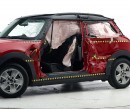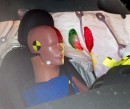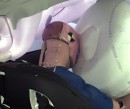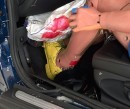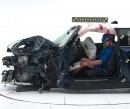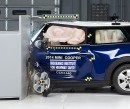Despite the many, repeated warnings from authorities and other concerned bodies, children continue to die in hot cars. Scientists have already explained the phenomenon as an override of conscious awareness, and now, other scientists are working on concrete ways to put an end to tragedies of this type.
Researchers from the University of Waterloo in Canada have created a sensor that uses radar technology and artificial intelligence to detect if there’s a child or a pet inside a locked car, triggering an alarm that summons the adult back into the vehicle, CNN reports. The sensor can be fitted onto the car’s roof or on the rearview mirror, is small and comes with 100% accuracy in terms of detection.
According to the report, the sensor sends radar signals that bounce back off people or pets left behind in a locked vehicle. Its high efficiency rate is due to the fact that radar signals can go through objects, making detection inevitable. When that happens, the AI analyzes the findings and decides whether to trigger the alarm.
The alarm can come in the form of an actual car alarm that would summon the owner back to where he or she parked it, or as a notification that goes straight to the adult’s phone. The device can also be programmed to prevent the locking of the car’s doors.
“It addresses a serious, world-wide problem,” George Shaker, an engineering professor at the university, says of the sensor. “This system is so affordable it could become standard equipment in all vehicles. Unlike cameras, this device preserves privacy and it doesn't have any blind spots because radar can penetrate seats, for instance, to determine if there is an infant in a rear-facing car seat.”
Researchers are planning for a 2020 wide release of their sensor, the same report notes.
Until then, there are other, more or less techy options to prevent hot car deaths or incidents. One of them would be placing an object you’d need in your everyday life (like a shoe, your phone or a laptop that you use for work) next to the child in the backseat, so that you have to go there to retrieve it.
Other, more sophisticated options, include an alarm-triggering movement sensor like SOLO or Sense-A-Life, a pad that is also fitted with sensors and placed under the kid’s carseat, becoming activated when the child is left in it after you lock the doors.
According to the report, the sensor sends radar signals that bounce back off people or pets left behind in a locked vehicle. Its high efficiency rate is due to the fact that radar signals can go through objects, making detection inevitable. When that happens, the AI analyzes the findings and decides whether to trigger the alarm.
The alarm can come in the form of an actual car alarm that would summon the owner back to where he or she parked it, or as a notification that goes straight to the adult’s phone. The device can also be programmed to prevent the locking of the car’s doors.
“It addresses a serious, world-wide problem,” George Shaker, an engineering professor at the university, says of the sensor. “This system is so affordable it could become standard equipment in all vehicles. Unlike cameras, this device preserves privacy and it doesn't have any blind spots because radar can penetrate seats, for instance, to determine if there is an infant in a rear-facing car seat.”
Researchers are planning for a 2020 wide release of their sensor, the same report notes.
Until then, there are other, more or less techy options to prevent hot car deaths or incidents. One of them would be placing an object you’d need in your everyday life (like a shoe, your phone or a laptop that you use for work) next to the child in the backseat, so that you have to go there to retrieve it.
Other, more sophisticated options, include an alarm-triggering movement sensor like SOLO or Sense-A-Life, a pad that is also fitted with sensors and placed under the kid’s carseat, becoming activated when the child is left in it after you lock the doors.


